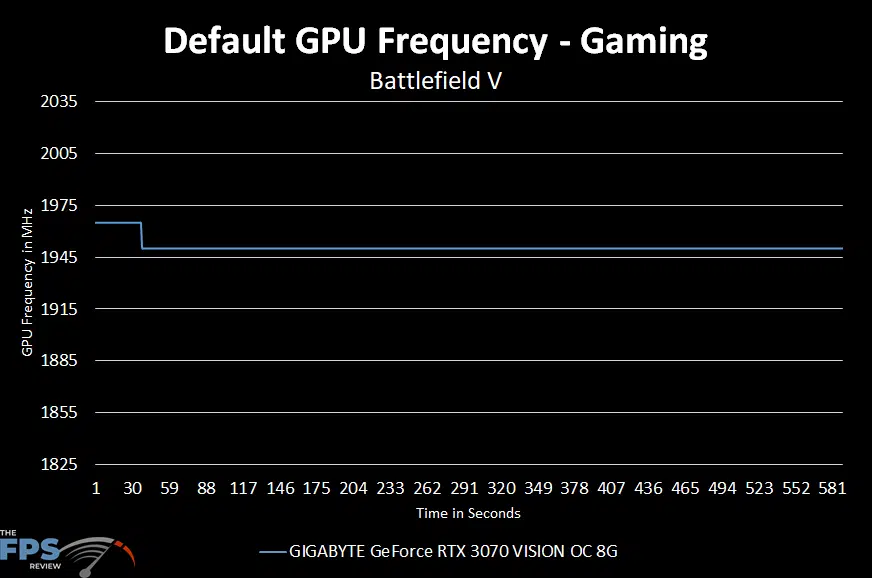Overclocking the GIGABYTE GeForce RTX 3070 VISION OC
How do you overclock a GIGABYTE GeForce RTX 3070 VISION OC 8G video card?
Before we begin to overclock, we need to find out the real-world in-game GPU frequency the video card is operating at by default. That way we can find what frequency we are overclocking from and how much gain we get in overclocking. Keep in mind that NVIDIA GPU Boost already adjusts the GPU frequency dynamically to utilize most of the potential that is there. This means it will already clock the GPU frequency well above the quoted Boost Clock even without overclocking.
Default Clock
The base clock on this video card is 1500MHz, which isn’t very helpful. More importantly, it is the GPU Boost Clock that makes the difference and it is set at 1815MHz on the GIGABYTE GeForce RTX 3070 VISION OC 8G. This is 90MHz higher than the Founders Edition GPU Boost of 1725MHz.

The GIGABYTE GeForce RTX 3070 VISION OC 8G settled in at 1950Mhz during testing and maintained a temperature of 65 degrees Celsius. Comparing to the Founders Edition that averaged 1935MHz, the GIGABYTE GeForce RTX 3070 VISION OC 8G clocks 15MHz faster out of the box. Memory in both the Founders Edition and the GIGABYTE GeForce RTX 3070 VISION OC 8G is set to 14GHz using GDDR6 memory.
Highest Stable Overclock
To dial in the maximum overclock for the GIGABYTE GeForce RTX 3070 VISION OC 8G, we used GIGABYTE’s AORUS Engine software that makes lots of knobs to turn and levers to pull available for tuning enjoyment.
We typically start by maxing out the power target, however, this was already done for us and we were not able to adjust it. It defaults at 100% and there is no option to increase the power target further sadly. This is something we haven’t seen before as even the Founders Edition allowed a power target increase of 9% when we tested it. The MSI RTX 3070 GAMING X TRIO allowed a small 4% increase, but at least it was something. Not allowing a power target increase at all lessens the enthusiast overclocking aspect of the video card.
We then cranked the fans up to 100%. The voltage adjustment was locked within AORUS Engine, however, given the low power budgets on the RTX 30 Series that we have seen so far, adding voltage has not been necessary as it only increases power consumption and reduces how far GPU Boost will push the core clock speed up.
With the power matters settled, we started by pushing the core clock up as high as it could go without touching the memory side of the equation. We were able to pick up an extra 70 MHz on the slider offset before we started crashing.
Next up, we set the core back to stock and boosted the memory to see how far we could take it. It appeared to be happiest at +800MHz (1600MHz effective.) This is a boost to 15.6GHz GDDR6 over the stock of 14GHz GDDR6.
Putting it all together, we first tried our max individual clocks together to see how it worked. Initially, it seemed like it was going to be in the cards, but about three games into testing we found that we had to back off just a little bit to stabilize those games. This gave us a final stable overclock of 1570MHz core clock, 1885MHz boost clock, and 15.6GHz memory clock.
Comparing the sustained GPU frequency to the stock frequency, we see that the observed overclocked frequency averaged out to 2025MHz. This is a 3.8% increase over the stock clocks and a 4.7% increase over the 3070 Founders Edition. The memory at 15.6GHz is 11.4% faster than the stock clock as well.





